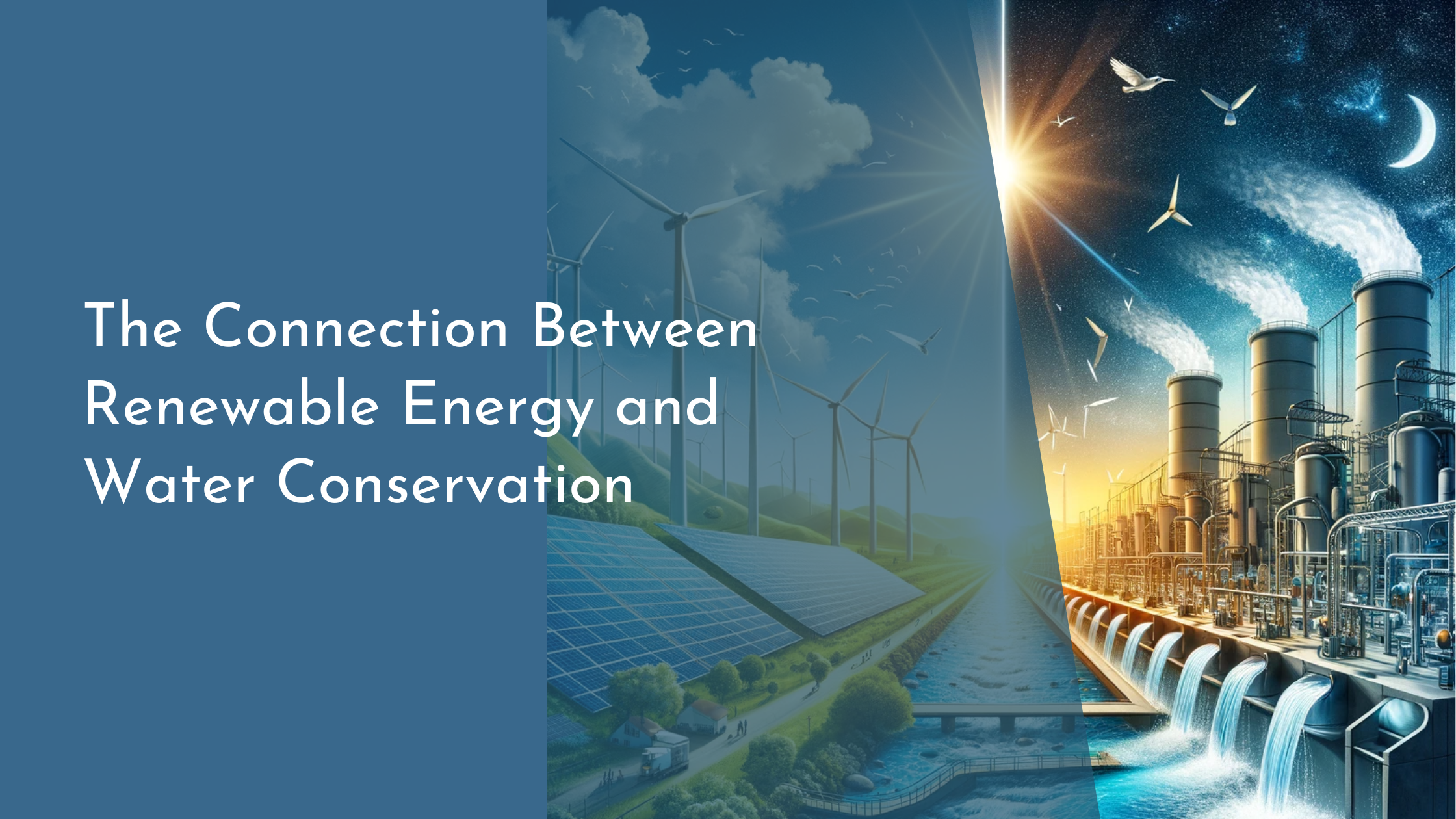The Connection Between Renewable Energy and Water Conservation
As the world increasingly turns to renewable energy sources to combat climate change, it’s important to understand the broader implications of this shift. One often overlooked benefit of renewable energy is its potential to significantly reduce water consumption. In an era where water scarcity is a growing concern, the adoption of renewable energy not only holds promise for reducing carbon emissions but also for conserving one of our planet’s most precious resources—water. This article explores how different forms of renewable energy contribute to water conservation and why embracing these technologies is crucial for a sustainable future.
Understanding Renewable Energy’s Role in Water Use
Renewable energy technologies, such as solar and wind power, typically require far less water than conventional energy sources like coal, natural gas, or nuclear power. Traditional power plants consume vast amounts of water for cooling purposes, affecting local water resources and ecosystems. In contrast, renewable energy systems often operate with minimal or zero water use, making them an attractive option for regions facing water scarcity issues. This shift not only aids in reducing stress on freshwater supplies but also empowers communities to harness clean energy without compromising their water needs.
Moreover, the integration of renewable energy into power grids results in a more sustainable and efficient energy system. By decreasing reliance on water-intensive energy sources, renewables help to alleviate the pressure on both surface and groundwater supplies. This is particularly beneficial in arid and semi-arid regions, where water is a limited resource. As renewable energy continues to expand, it plays a vital role in fostering a balance between energy production and water conservation, contributing to the long-term sustainability of both resources.
How Solar Power Contributes to Water Conservation
Solar power is one of the leading renewable energy technologies that significantly minimizes water use. Photovoltaic (PV) solar panels require no water for electricity generation, which contrasts sharply with traditional power plants that use water for cooling. This reduction in water consumption is particularly beneficial in drought-prone areas where maintaining adequate water levels for agriculture and human consumption remains a challenge. By adopting solar energy, communities can secure their energy needs while conserving crucial water resources.
Solar thermal power plants, which use mirrors to concentrate sunlight to produce steam and drive turbines, do require some water for cooling. However, technologies such as dry cooling systems and hybrid cooling systems have been developed to drastically reduce water consumption. By implementing these innovative solutions, solar thermal power maintains its appeal as a water-efficient alternative to conventional power generation methods. As technology advances, solar energy not only provides a clean electricity source but also plays a pivotal role in the conservation of water resources across the globe.
Wind Energy: A Breeze for Water Resource Management
Wind energy stands out as another renewable powerhouse that supports water conservation. Unlike fossil fuel-based power plants that demand significant water for cooling, wind turbines generate electricity without requiring water in the process. This attribute makes wind energy a particularly appealing option for regions struggling with water shortages or those looking to preserve their water resources. By incorporating wind energy into the mix, communities can reduce their dependence on water-intensive energy sources, thus promoting sustainable water management.
Furthermore, wind energy infrastructure often occupies less space compared to other forms of energy generation, allowing for dual land use, such as agriculture or wildlife habitat, without severe disruption. This ability to coexist with other land uses underscores wind energy’s role as a harmonious addition to the landscape. As the demand for clean, sustainable energy grows, wind power offers a versatile solution that aligns with both energy needs and water resource management goals, ensuring a greener and more water-conscious future.
As we look to the future, the connection between renewable energy and water conservation becomes increasingly clear. By embracing technologies like solar and wind power, we can significantly reduce our water footprint while simultaneously addressing the pressing issue of climate change. These renewable solutions not only provide clean energy but also safeguard our water resources for future generations. As we continue to innovate and invest in renewable energy, we lay the groundwork for a more sustainable and water-conscious world. Together, let’s harness the power of renewables to create a greener, more vibrant planet for all.

